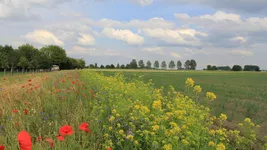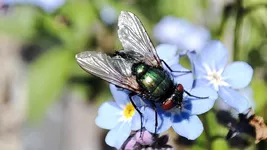Agroforestry & Biodiversity
In agroforestry systems, agricultural production (arable farming or pasture) is combined with forestry production (trees or shrubs for fruits, nuts or timber). This form of land management is associated with positive effects such as improved water and nutrient supply, increased soil fertility, reduced erosion, groundwater protection, climate protection, preservation of biodiversity and an expansion of the product range.
A graduate programme on agroforestry systems (AF) is being established at HEF, building on interdisciplinary collaboration between agricultural and forest scientists and linking modelling approaches with experimental approaches. AF focuses on the integration of woody plants into agricultural landscapes to meet ecological, economic and social needs, with the aim of increasing landscape resilience and ecosystem services through multifunctionality and biodiversity. Within the graduate programme, different PhD projects will investigate the effects of combinations of forestry use of shrubs, fruit and nut trees and agricultural land use on the performance of land use systems at different scales. Modern digital techniques for data collection and provision, modelling and "smart farming" are used. A special feature is the close interdisciplinary cooperation of experts from a wide range of agricultural, forestry and environmental sciences at the site.
News
How do city residents feel about animals in their immediate surroundings? A recent study by the Technical University of Munich (TUM), the University of Jena and the Vienna University of Technology shows how different the acceptance of various wild animals in urban areas is. Important factors are the places where the animals are found and their level of popularity - squirrels and ladybugs come out on top here. The results have important implications for urban planning and nature conservation.
[read more]
Preserving biodiversity without reducing agricultural productivity: So far, these two goals could not be reconciled because the socio-ecological system of agriculture is highly complex, and the interactions between humans and the environment are difficult to capture using conventional methods. Thanks to new technology, a research team at the Technical University of Munich and the University of Hohenheim show a promising way to achieve both goals at the same time. The members of the team focus on…
[read more]
Researchers at the Technical University of Munich (TUM) have found that in the early season, insects such as wasps, beetles and flies play a crucial role in pollinating plants in urban environments. Moreover, for biodiversity that is so important, the food supply is more crucial than, for example, land sealing. This gives gardeners a key role in biodiversity and pollination in urban areas.
[read more]
Biodiversity increases the efficiency of energy use in grasslands: Plants obtain their energy from the sun. Other beings rely on eating to survive. Yet how does the energy flow inside ecosystems function and are there differences between ecosystems with many species in comparison to those with few species? Researchers have now examined these questions using a holistic approach by evaluating data gathered through a large-scale biodiversity experiment.
[read more]


